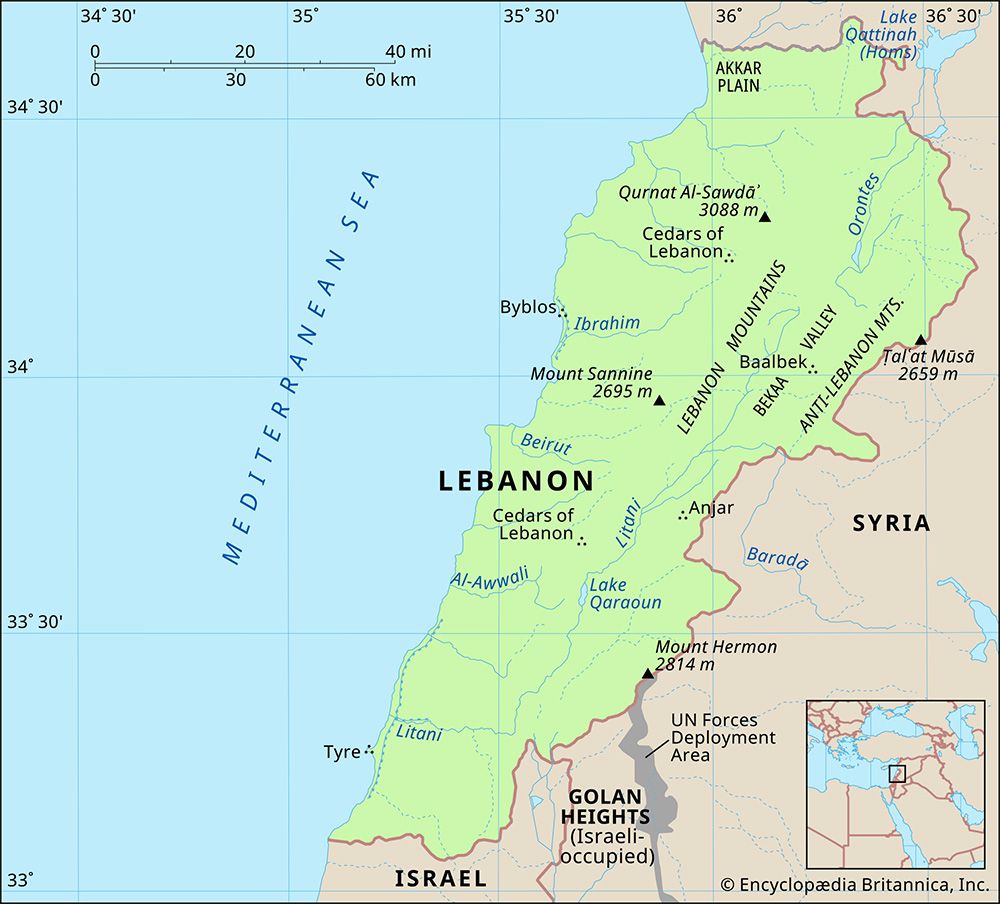News •
Politics and reconstruction in post-civil war Lebanon
Rebuilding the political and economic infrastructure
The immediate challenges of Lebanon’s post-civil war period were to reconstruct the country’s social and economic infrastructure and to institutionalize the political reforms agreed to at Ṭāʾif. The destruction necessitated a sweeping program of reconstruction, which was largely undertaken by Prime Minister Rafic al-Hariri following his appointment to the post after the 1992 parliamentary elections. Hariri’s reconstruction plan, designed to revive the economy and reestablish Lebanon as a financial and commercial center in the region, achieved the initial stabilization of the value of the Lebanese pound and succeeded in raising significant foreign capital on European bond markets, albeit at high rates of return. Meanwhile, Lebanon achieved important political successes with the transition of the presidency in 1998 from Hrawi to Lahoud, paralleled by the transition from Hariri’s government to that of Salim al-Hoss that same year, and with the increasing legitimacy of the National Assembly in the Lebanese political process. The gradual reintegration of previously marginalized groups, facilitated by acceptance of the Ṭāʾif reforms, meant an increased role for both the Maronite Christians (who had initially boycotted the electoral process) and Hezbollah, which became politically active in postwar Lebanon.
However, while the Ṭāʾif Accord had called for a gradual end to confessionalism within the country, the reality in post-civil war Lebanon tended toward an entrenchment and strengthening of sectarian allegiances. The civil war had resulted in the virtual elimination of multiconfessional regions where coexistence was the norm; as a result, sectarianism became increasingly geographically as well as culturally defined. Moreover, the electoral system continued to militate against the emergence of crosscutting political parties with the ability to challenge the regional power bases of Lebanon’s traditional zuʿamāʾ. Despite the increased dynamism of the Lebanese parliament, real political power in Lebanon’s Second Republic lay with the troika of sectarian leaders that occupied the offices of president, prime minister, and speaker of the Assembly. Following the disarmament of most of the various militias of the civil war era, communal conflict was largely transplanted to the political arena, as political decisions largely became a result of elite confessional bargaining rather than an outcome of the democratic process.
Resistance to the ongoing Israeli and Syrian presence in Lebanon
The development of the Second Republic, moreover, remained closely linked to its larger external environment—in particular, to Israel and Syria, the two principal foreign actors in Lebanon since the outbreak of the civil war. Israel continued to exercise influence in its self-declared security zone in southern Lebanon, where it waged an ongoing war of attrition with Hezbollah’s militia forces throughout the 1990s. However, in light of the increasingly costly war, Israeli support for a unilateral withdrawal from Lebanon had gathered significant momentum by the end of the decade, and Israeli troops were withdrawn in 2000.
Meanwhile, following the agreement reached at Ṭāʾif, Syria also continued to exercise an extensive influence in Lebanon. Socioeconomic ties between Syria and Lebanon were facilitated by a series of bilateral treaties and agreements concluded between the two governments, the scope of which ranged from economic and trade ties to cultural and educational exchanges. On May 22, 1991, a treaty of “fraternity, coordination, and cooperation,” interpreted by some as a legitimation of Syria’s continued presence in Lebanon, was signed with Syria, and a defense and security pact followed. In addition, despite stipulations in the Ṭāʾif Accord that called for a withdrawal of Syrian troops to Bekaa by the end of 1992, Syria maintained a contingent of some 30,000 troops in Lebanon in the 1990s. With the Israeli withdrawal from the south of the country in 2000, however, calls for Syrian disengagement increased. Over the next several years, Syrian troops undertook a series of phased withdrawals and redeployments, gradually restructuring the number and distribution of Syria’s armed forces in Lebanon. Overall troop strength for the Syrian army in Lebanon was reduced to about 14,000, but it was not until the assassination of Hariri in early 2005 that real domestic pressure for a full Syrian withdrawal began to grow. It was widely suspected that Hariri, who was then out of office, was killed at the behest of the Syrian government. The result was that hundreds of thousands of Lebanese—both against and for the Syrian presence—poured into the streets in a series of spontaneous mass protests. The last Syrian troops had left Lebanon by mid-2005, and in late 2008 Syria and Lebanon established formal diplomatic ties for the first time ever.
However, even though Israeli and Syrian troops were now gone, their influence in Lebanon remained a source of contention. Hostility between Israel and Hezbollah, marked by periodic clashes and retaliatory exchanges of violence, continued into the early years of the 21st century. Tensions flared in July 2006, when Hezbollah launched an armed operation against Israel from southern Lebanon, killing a number of Israeli soldiers and abducting two as prisoners of war. This led Israel to launch a major military offensive against Hezbollah (see 2006 Lebanon War) which came to an end only after Israel, Hezbollah, and the Lebanese government accepted UN Resolution 1701. The 34-day war between Hezbollah and Israel, in which more than 1,100 Lebanese and about 160 Israelis were killed and some 1,000,000 Lebanese were displaced, caused fresh damage to key services and infrastructure in southern Lebanon.

























